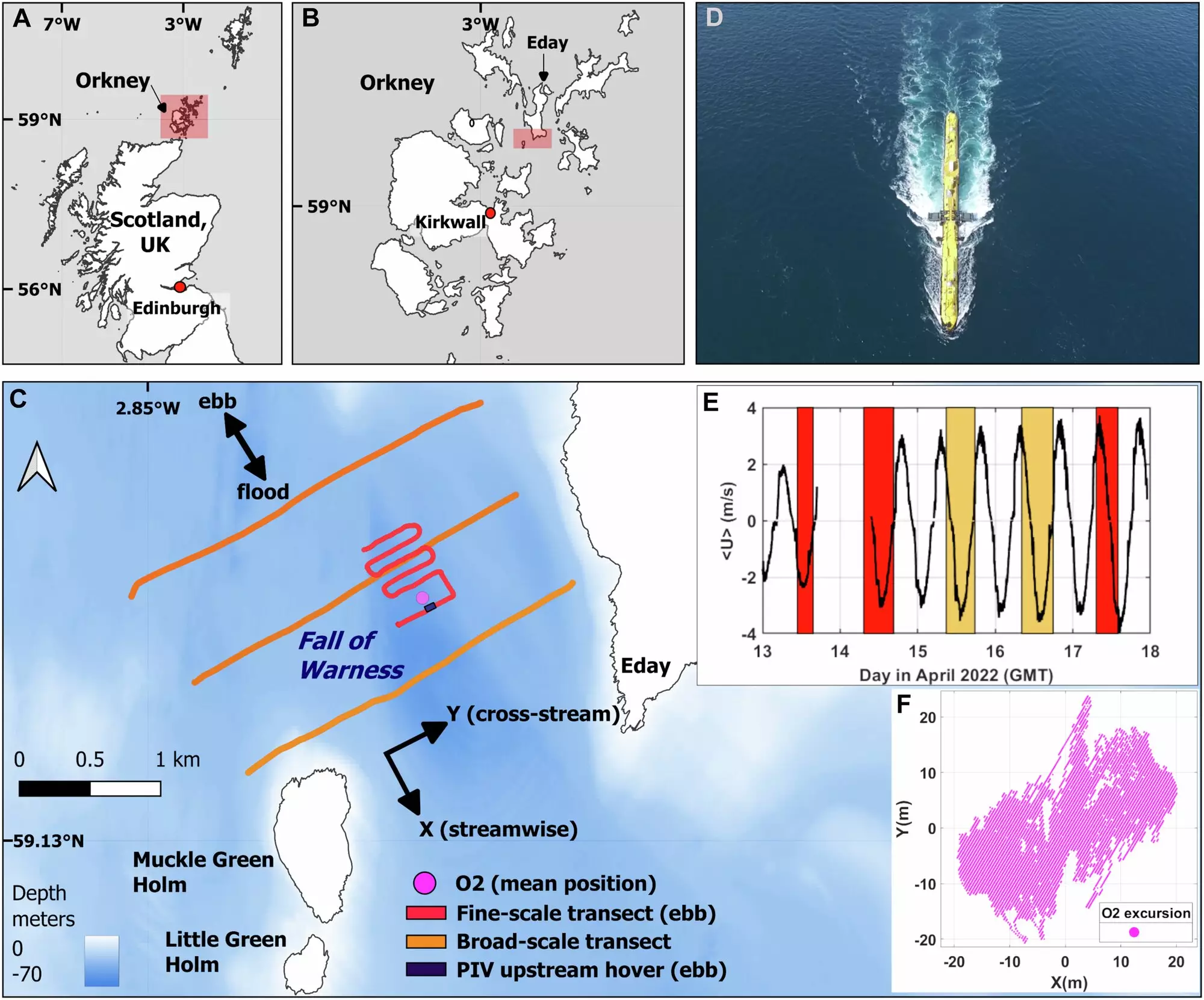As the urgency for renewable energy solutions escalates in the face of climate change, the UK is poised to experience a significant increase in tidal power and other offshore renewable energy installations. The advantages of harnessing tidal energy include its predictability and regularity in contrast to other renewable sources like wind and solar. Tidal energy facilities promise to usher in a new era of sustainable electricity, theoretically capable of supplying a notable percentage of the UK’s energy needs. However, as the technology evolves and expands, engineers and scientists encounter myriad challenges, particularly concerning the system’s interaction with turbulent ocean flows.
In the heart of these developments is Orbital Marine Power’s O2 tidal turbine, located in the Orkney Islands. This pioneering design floats at the sea surface, securely anchored to the seabed. At over 70 meters, this turbine is not only a technological marvel but also a potential game changer in the quest for sustainable energy. It has the ability to power approximately 2,000 homes annually, representing just a fraction of the possible outcomes if multiple installations are rolled out along the coastline.
Ongoing research is crucial for mitigating the risks associated with deploying such advanced technologies in the face of nature’s unpredictability. A team of scientists has embarked on a holistic study using innovative methods such as drone technology and boat surveys to analyze the intricate tidal flows around the O2. The findings from these efforts reveal a detailed understanding of how tidal currents, particularly those exceeding speeds of 8 knots, can influence turbine performance and efficacy.
Furthermore, the wake generated by the turbine poses additional concerns regarding the placement of subsequent installations and the overall health of marine habitats. These insights direct researchers to adopt a more informed approach regarding the optimal positioning of tidal turbines, emphasizing the critical need for site-specific assessments that merge practical oceanographic data with theoretical models.
The Interplay of Ecology and Technology
One of the distinguishing complications highlighted in the research involves the dual nature of turbine functionality and its implications for local marine ecology. While previous studies indicated that turbine wakes can create a hotbed for foraging seabirds, this advantage is accompanied by the risk that overcrowded turbine arrays could constrain the movement of marine fauna. Notably, during drone observations, researchers spotted orcas swimming past the turbine, underscoring the importance of evaluating turbine impacts on a whole ecosystem scale.
Dr. Lilian Lieber, a senior research fellow involved in the study, offers insight into the challenges faced when conducting oceanographic surveys in fiercely dynamic tidal streams. She emphasizes how the interplay between technology and nature requires careful consideration to ensure both effective energy generation and minimal ecological disruption.
Tidal energy represents not only a sustainable approach to electrification but reflects a broader commitment to addressing climate-related concerns. Despite its promise, the tidal sector wrestles with hurdles like high initial investment costs, complexities of grid integration, and the necessity for turbines to withstand severe conditions inherent in tidal environments.
Collaboration among scientific disciplines and deployment of advanced technology is paramount to overcoming these challenges. This study showcases the significant progress being made by merging scientific insight with innovative measurement techniques geared toward reliable performance of tidal systems. As the industry aims to meet a projected capacity of delivering up to 11% of the UK’s annual electricity needs through tidal energy, it is vital that infrastructure developments remain informed by such pioneering research.
Moreover, the research not only builds a case for the essential contributions that tidal energy can make, but it also calls for responsible planning in the context of larger offshore renewable energy agendas. With greater numbers of installations expected, the ability to accurately predict the complexities of dynamic tidal environments will be a keystone to unlocking the full potential of this green power source.
Looking ahead, the ambitious plans for tidal energy installations around the UK coastline will require a multifaceted approach that prioritizes ecological integrity and technological efficiency. The collaboration between universities, marine organizations, and industry stakeholders will be essential in driving these initiatives forward. As researchers tackle the myriad uncertainties of deploying tidal turbines in challenging environments, they will pave the way for a cleaner, more sustainable energy future, demonstrating that advancements in tidal power can harmonize human endeavors with the natural world.


Leave a Reply